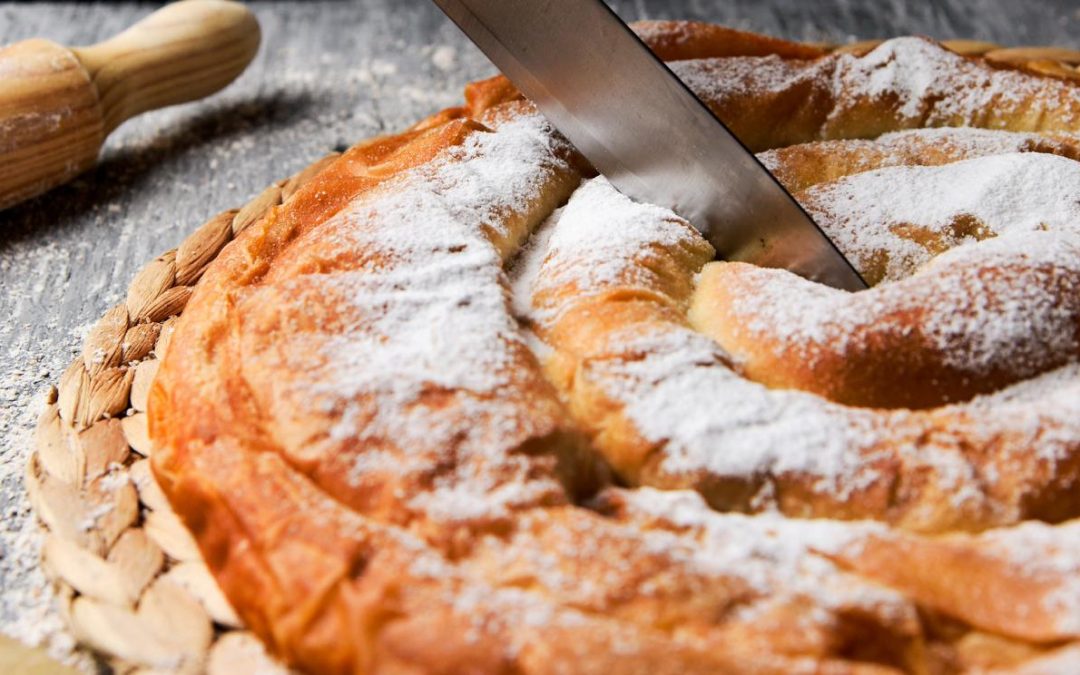Like in many countries and cities, many Majorcan dishes have changed over the centuries. The influence of the population who inhabited and conquered the region was always very strong, still visible today.
Not only that, but the climate also affected local trades and products. Mallorca has had many influences over the past few thousand years, to the point its cuisine has incorporated specialities thanks to the neighbouring countries’ cultural impact.
What has been the significant impact of foreigners on Majorcan food? You might ask.
The region we now know as Mallorca has a more extended history than you think. Archaeological evidence shows Neolithic (6000-4000 BC) inhabitants, and from the VIII century BC, the Phoenicians came to power and eventually became one of their governors in the African city north of Carthage.
The Romans occupied the territory in 123 BC, where they ruled for most of the next millennium. Eventually, the islands were occupied by the Moors of North Africa in AD 907, who also conquered all of southern Spain.
So you can see how all this influence may have shaped what we know today as Majorcan cuisine, with touches of all these different people and cultures.
Here is a list of 5 Majorcan dishes that speak to this exciting history and certainly some you mustn’t miss if you travel to the island soon.
Sobrasada
Sobrasada is a dish made of cured pork loin sausages, pork belly, bacon, just a bit of paprika, a bit of salt, and also pepper. Some people add cayenne pepper on some occasions.
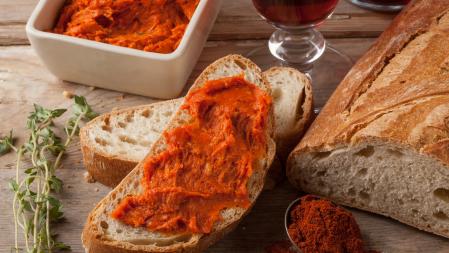
The tradition of homemade cured pork loin sausages disappeared during the period of Muslim governments in the area but was quickly reintroduced when the Catalans conquered the territory.
The paprika was incorporated into the recipes soon after paprika was first brought to Mallorca, which is believed to have happened between the 16th and 17th centuries.
Nowadays, Sobrasada has an IGP (Protected Geographical Indication), which means the character and production are preserved by specific indications. This IGP limits the areas where the product can be made as well.
Sobrasada is different from other Spanish Chorizo, mainly due to the area’s climate. The humidity and the mild winters are essential for the chorizo curing process because they lead to obtaining a much softer sausage than others.
Many types of Sobrasada can be found in the area, from the classic shorter llonganissa to larger sausages called cular or pultrums. The large ones are known as bisbe by the people.
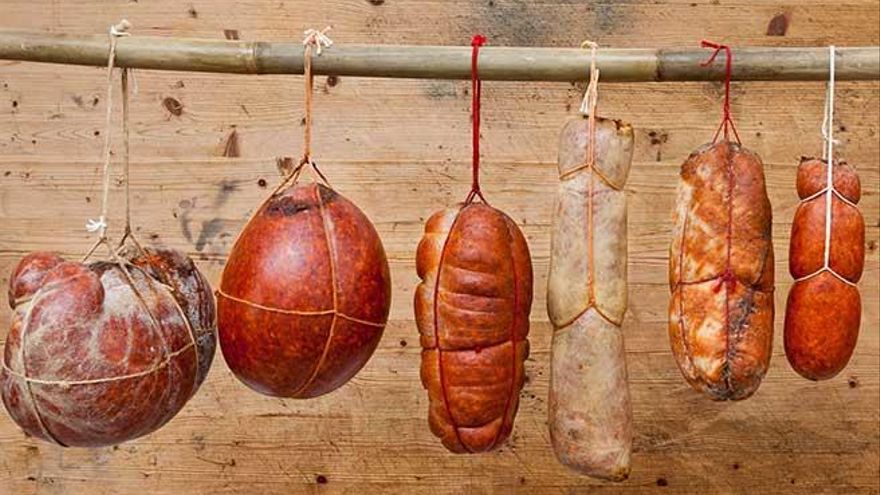
You can easily find Sobrasada in all markets in Palma de Mallorca and on most Majorcan restaurant menus. Sobrasada is also an ingredient for many other dishes, especially to add flavour to meals.
When fresh meat was unavailable or too expensive, families used Sobrasada as a source of pork meat.
Coca Mallorquina
Coca Mallorquina is one of the islands’ most popular Majorcan dishes as it is a popular dough, made of flour, water, olive oil, yeast, and salt. This dough is mainly used to accompany dishes and is made of xeixa flour, which comes straight from ancient Xeixa wheat.
This dough can be used to make Coca de Trempó, which could be a mixture between vegetables, pizza, and bread. This Coca can feel crispy like a biscuit when you have a bite of it but at the same time not crispy as Italian pizza, and with no cheese; instead of this, the Coca is topped with all sorts of toppings, such as fresh tomato, a special kind of green local pepper and onion, among other ingredients.
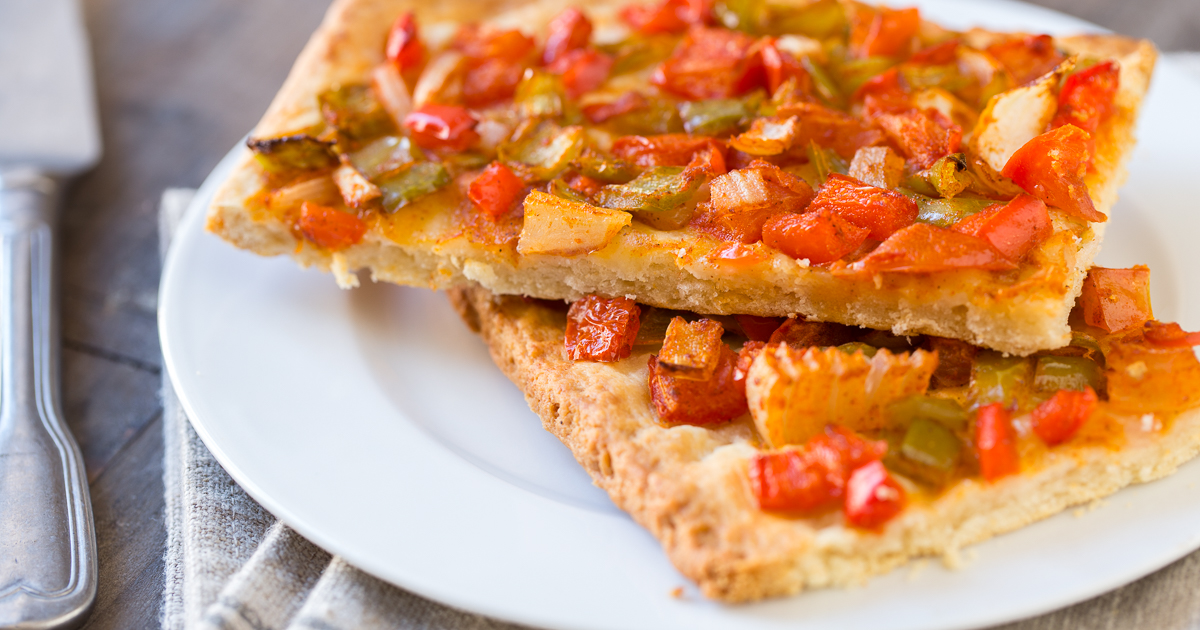
Ensaïmada
Ensaïmada is one of the most recognized Majorcan dishes: a light, flaky pastry similar to a croissant. Ensaïmadas are light due to their prep method, where the flour and the lard-based dough are constantly rolled until it is paper thin. Right then, the dough is smeared excessively in more lard, then rolled into a tube shape, and then coiled into a pastry with a round shape.
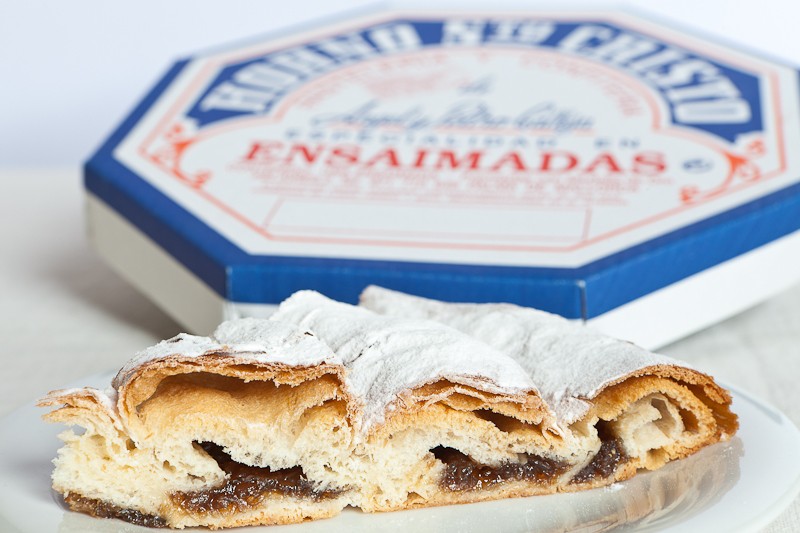
After shaping it, the dough is left apart to proof and rise in size for -in some cases- up to 48 hours, depending on the baker. After this, the Ensaïmadas go to the oven, and the air from the proofing process expands and separates the layers of dough, which gives Ensaïmadas their light weight and texture.
The idea behind Ensaïmadas is somewhat unclear, and the first recipes date back to the 18th century. Some people say there’s a legend about a Jewish baker who presented the Ensaïmadas to Jaume I of Aragon in 1229 when he conquered Mallorca.
On the other hand, food historians believe this pastry may have come from the Moorish way before 1229. Even though lard would have been forbidden at that estimated time, Ensaïmadas could have been invented based on bulemes dolces using sheep milk butter instead of pig fat to cook.
Just as the Sobrasadas, Ensaïmadas have also gained an IGP status. This pastry is so unique that you could not find anything like this elsewhere in Spain or Europe.
Pica Pica
Pica Pica is not one of the most famous Majorcan dishes in the Balearic cuisine, but travellers certainly love it. The meal is super simple, made of stewed squid, slowly cooked in tomato sauce, accompanied by onion, garlic, and just a bit of spicy paprika. For a flavour boost, you can add a bay leaf and cook until the squid softens just a little.
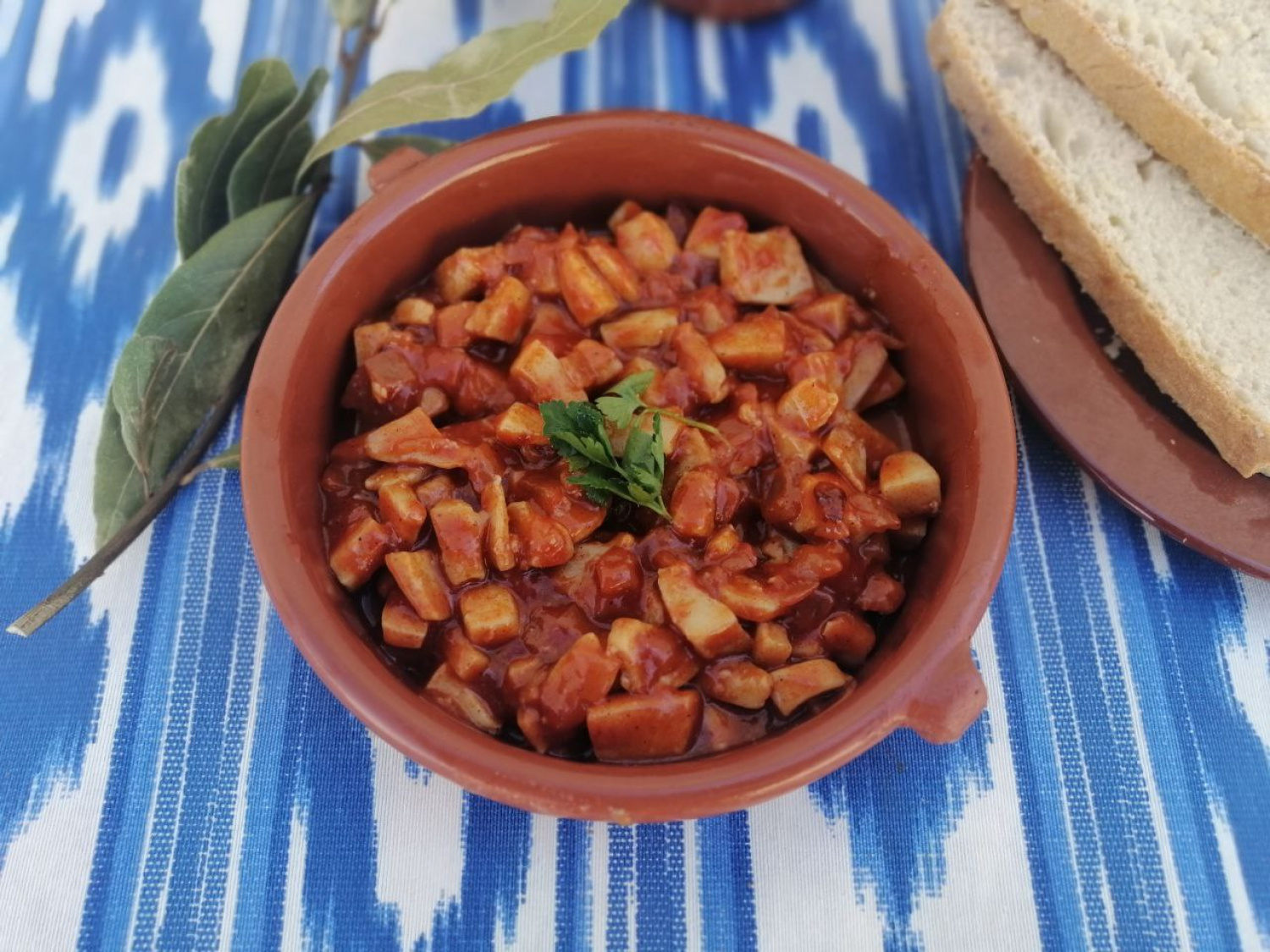
The squid makes Pica Pica a unique dish because it adds a perfect sea ingredient to a soft mix of flavours. The squid is salty, the tomato sauce is somewhat sour, and the chilli adds a spicy bit, making this combination hard to say no to if you are a big fan of intense flavours.
Tumbet
Tumbet is a must for locals due to how simple and affordable this recipe is to make.
It’s believed to have become popular in the 16th century, especially for the variety of ingredients –potatoes, tomatoes, bell peppers, aubergines, garlic, and olive oil. This variety of ingredients represented a mix of old and new-world ingredients.
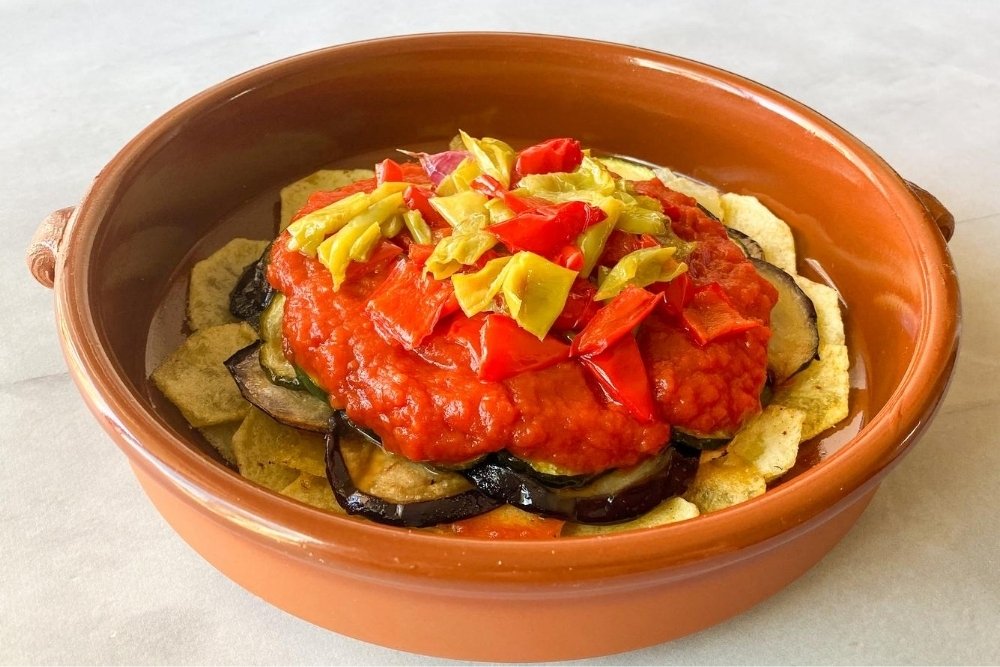
To prepare Tumbet, you must fry all the vegetables and prepare the tomato sauce with garlic separately. After you finish with the preparation of both parts, you mix them.
Tumbet is a great vegetarian/vegan option and is so versatile that it can be considered a main dish, a tapa, or a side dish. Known as the Majorcan ratatouille, Tumbet is believed to be inspired by the Catalan influence in the territory.
Would you like to try these and many other Majorcan dishes? You’ve come to the right place! Come learn to cook them with us and experience an unforgettable time in our open kitchen.

